I love travelling by train. You get on, find your seat or cabin, and wait. You can get up, walk around, go to the dining car if there is one… Eventually you get where you’re going, and you can’t do much to speed up the trip. It’s out of your hands. (For the most part. I’ve had to jump out of broken down trains and walk across the tracks to jump on another going the same way. I’ve had to change routes altogether because of flooded tracks. Generally, though, you’re stuck until the train you’re on gets where it’s going).
The time I travelled to Spain (and my first solo trip out of the country), I came as a YFU exchange student. We spent several days in Madrid in orientation, and then they loaded us onto trains bound for the provinces, with instructions regarding where we were supposed to get off. I had several other exchange students on my train. One was bound for Valladolid, two stops before Palencia (where I was headed). Venta de Baños was the last stop before Palencia, although I suppose most of today’s trains don’t stop there. Venta de Baños used to be the primary railway junction for the northeast and northwest provinces of Spain. I have a vague memory of another YFU exchange student having to change trains for Santander at Venta de Baños, but that may be my imagination, or it may have been another trip. In any case, the boy who was supposed to get off in Valladolid didn’t, and he was told–lots of arm-waving and running after the train–to get off with me in Palencia. We were very ready to get off there!.
By the time I finished that first year in Spain, I was quite comfortable with RENFE, the Spanish train system. I’d travelled on the Talgo (then the fastest trains in Spain, but far outpaced by the AVE, and even today’s intercity trains) and on the milk runs.
It was quite cheap then. Not so much now. The first AVE went only to Sevilla (and stops on the way), but they’ve been expanding the high speed tracks all over Spain. It’s meant some confusion for me, because the stations have changed. When I took the AVE to Valencia four years ago, I assumed it stopped at the Estació del Nord.. so did the people who were picking me up. But ever since the AVE reached Valencia, the long distance trains stop at Joaquin Sorolla, just down the tracks, but rather complicated to drive to in a car.
There is little difference between intercity and AVE trains to Valencia, except in the price. Either way, the trip is air-conditioned, comfortable, and fast (around two hours to Madrid, vs. up to six in a car if you get traffic. I’ve got bad memories of slow returns after holidays).
New to me were the handicapped bathrooms on the Intercity–huge, and air conditioned. Note that the regular WCs are not air-conditioned and are decidedly stuffy and a bit stinky.
During my Junior Year Abroad, I travelled all over Europe by train. Georgetown encouraged its students to study abroad, so many of my friends were in Europe. I studied in Madrid, at the Universidad Complutense. I had friends in Vienna, Lyons, Strasbourg… I met people on the train and in stations, and stayed in Paris with a Spanish/French girl from Malaga. Sometimes I just headed out of Madrid and changed trains according to which had a couchette available. I’d spend the hours reading or writing in my journal.. no portable technology then. I did not take many pictures, certainly not of bathrooms or the countryside. Of course, I did not have the advantage of digital cameras nor the luxury of taking hundreds of pictures, to keep only the few good ones.
This time I slept and took pictures:
The glare from the window always bothers me (and they could clean the windows!!)
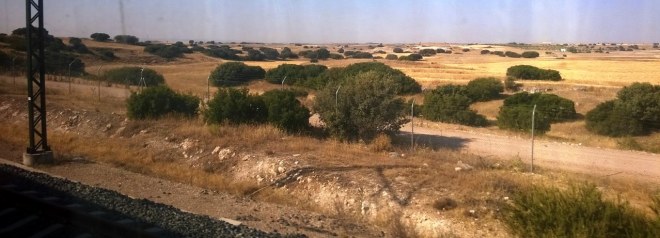
In some ways, train travel has changed a lot over the last few decades, due in large part to the 3/11 train bombings. On my oldest son’s fourth birthday (2004), two and a half years after 9/11, Al-Qaeda–or followers of Al-Qaeda–bombed the train station of Atocha in Madrid. Nearly 200 people died, and the ruling party (right wing PP, and Jose Maria Aznar) lost the general elections that took place a few days later. The PP blamed the Basque separatist group ETA, and in general handled the event very poorly. The socialist PSOE’s Zapatero became president… which in general was a good thing, because during his two terms he legalized gay marriage and made divorce a one-step, much cheaper process (previously married couples had to go through two separate legal processes, separation and divorce; I believe a full year had to pass between the two, and they both incurred huge legal costs), and strengthened anti-tobacco legislation. Zapatero was also a bit of a fool at times, exemplified by the “¿Por qué no te callas?” incident, in which then King Juan Carlos told the President to shut up in a meeting with, amongst others, Hugo Chavez of Venezuela.
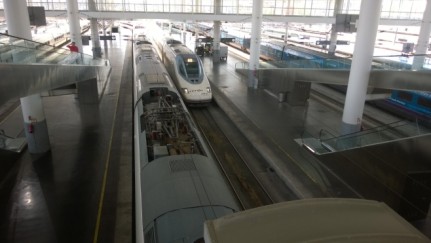
My sons and I went through Atocha train station on a regular basis in 2004, so the attack felt quite personal. We lived in Valdemorillo, a town near El Escorial in the suburbs of Madrid. We would regularly catch the train in Las Rozas and get off in Atocha when we wanted to go into Madrid. The boys were two and just turned four at the time of the Atocha bombings. They spent mornings at a British preschool in Las Rozas while I worked on my latest novel in a nearby hotel. Sometimes I would catch the train into Madrid to shop. Luckily I did not do so that day.

Another view on the way to Valencia:
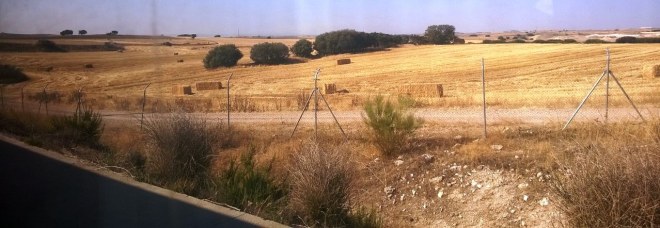

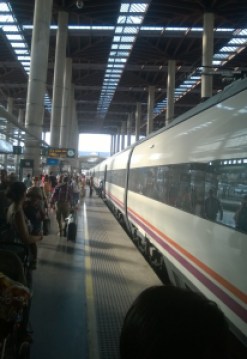
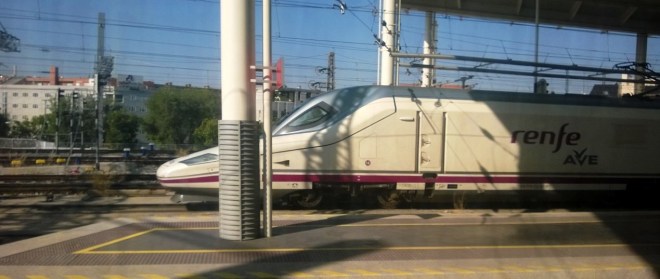
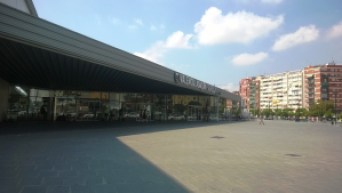
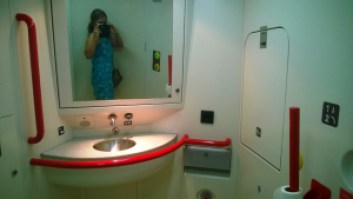



Very nice account of Spanish trains Jessica! Vicky
Thank you 😊